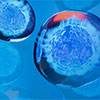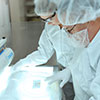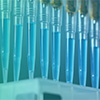Preparing Buffer Solutions
Buffer solutions play an important role in biopharmaceutical manufacturing by maintaining the ideal pH levels necessary for crucial processes. Their significance lies in stabilizing pH conditions, which are essential for activities like enzymatic reactions, cell cultures, and protein purification. The preparation of buffer solutions involves a comprehensive approach that takes various factors into account. The key components, such as acids and bases, are skillfully combined in precise proportions to ensure accurate measurements. Specialized laboratory equipment like pH meters and pipettes are employed to achieve precise pH adjustments. Techniques like titration or stepwise addition are used to reach the desired pH levels. Quality control measures, including regular equipment calibration and pH verification, are implemented to ensure the reliability of buffer solutions. How Do Buffer Solutions Work?Buffer solutions are essential in various scientific fields as they maintain a stable pH environment. They achieve this by containing a balanced combination of a weak acid and its conjugate base (or vice versa). When an acid is added, it reacts with the conjugate base to prevent a pH drop, and when a base is added, it reacts with the conjugate acid to prevent a pH increase. This buffering action is valuable for tasks such as enzymatic reactions, DNA manipulation, and biopharmaceutical processes. The effectiveness of a buffer, measured as its buffer capacity, is at its peak when the pH matches the pKa of the weak acid or base in the system. Significant deviations from this pH reduce buffer capacity because the shift towards acidic or basic forms becomes less favorable. Choosing the right buffer system tailored to specific applications optimizes buffer capacity. In manufacturing, the selection of a buffer system impacts factors like the pH range, compatibility with process conditions (such as temperature and ionic strength), and stability. Matching the buffer with the desired pH range ensures effective pH control, which is particularly critical in sensitive processes like biopharmaceutical manufacturing, ensuring reliable and consistent results. Types of Buffer SolutionsBuffer solutions come in various types, each designed for specific purposes. Acidic buffers are used to maintain pH levels below neutral and are crucial in biochemical reactions and processes that require an acidic environment. On the flip side, alkaline buffers are employed to sustain pH levels above neutrality, particularly in reactions that demand a basic setting, like DNA denaturation. Cleaning buffers are essential in laboratory routines as they assist in equipment cleaning and residue removal, ensuring consistent equipment performance. Meanwhile, storage buffers play a critical role in preserving the integrity of samples over extended periods. This involves maintaining a stable pH environment and preventing sample degradation in molecular biology and biopharmaceuticals. Acidic BuffersAcidic buffers help maintain the pH levels below neutral in biochemical reactions like enzymatic assays, protein denaturation, and nucleic acid hybridizations. They provide the necessary acidic environment for optimal enzyme activity and accurate DNA amplification in processes like PCR. These buffers are vital in both biological and chemical research, allowing precise control of pH-sensitive reactions to carry out experimentation under acidic conditions. Alkaline BuffersAlkaline buffers are essential for maintaining pH levels above neutral in various biological and chemical reactions. They support enzymatic reactions, cell culture growth, and separation techniques like gel electrophoresis. These buffers help enzymes perform optimally in alkaline conditions and ensure proper biomolecule separation. They are versatile tools for fine-tuning pH in processes that thrive in alkaline environments. Cleaning BuffersCleaning buffers simplify laboratory equipment maintenance by efficiently removing residues and contaminants from instruments and tools. They preserve equipment functionality, especially in sensitive procedures like DNA sequencing and protein purification, where equipment cleanliness can help prevent cross-contamination and sample integrity compromise. These buffers also extend to cleaning glassware and reusable laboratory tools, ensuring consistent, contamination-free experimental conditions. Storage BuffersStorage buffers help preserve vital for preserving the stability and quality of biological samples over extended periods. They safeguard biomolecules like DNA, RNA, and proteins by maintaining the right pH levels, ionic strength, and buffer components. This minimizes sample degradation and maximizes sample viability, supporting downstream applications like genetic analysis and protein studies, where the integrity of stored samples directly impacts research outcomes. Buffer Solution Components and EquipmentThe successful preparation of buffers relies on a specific set of essential chemicals. Acids and bases are the core components that allow you to adjust the buffer’s pH to your desired range. A crucial concept in buffer chemistry is pairing a weak acid with its conjugate base (or vice versa). This combination forms a buffering system that effectively resists pH changes when introducing acids or bases. For instance, acetic acid (CH3COOH) and its conjugate base acetate (CH3COO-) are an example of a highly efficient buffer pair. Moreover, the Henderson-Hasselbalch equation is a valuable tool that helps determine the precise proportions of the weak acid and its conjugate base required to achieve a specific pH level. Laboratory EquipmentWhen it comes to preparing buffer solutions in manufacturing, it's vital to employ specialized laboratory equipment to ensure accuracy and consistency in the process. By using these specialized tools, manufacturers can be rest assured about the precisely prepared buffer solutions that adhere to the required pH levels. Here are some key tools: Handling Powdered ComponentsWhen handling powdered chemicals, it is necessary to prioritize safety with proper protective gear like gloves, safety glasses, and lab coats to minimize contact risks. Working in well-ventilated areas can help reduce inhalation risk while using analytical balances for precise measurements allows the dispensing of powders slowly and near containers to limit airborne particles. Adjusting solution pH with acids or bases is a controlled process vital for buffer preparation. It is important to gradually add acidic (e.g., hydrochloric acid) or basic (e.g., sodium hydroxide) solutions while continuously monitoring pH with a meter. For further guidance, the Henderson-Hasselbalch equation can be used as adding acid lowers the pH while adding base increases it. However, it’s suggested to take the necessary precautions to avoid pH overshooting. Also, mix thoroughly after each addition. Precise pH control ensures accurate and reproducible outcomes in various applications, vital for effective buffering. Calculating Buffer ComponentsCreating effective buffer solutions involves meticulous calculations, and one of the fundamental tools in buffer chemistry is the Henderson-Hasselbalch equation. This equation provides valuable insights into the pH of a buffer solution based on the concentrations of its components and the pKa (acid dissociation constant) of the weak acid involved. pH = pKa + log ([A-]/[HA]) where [A-] represents the concentration of the conjugate base, and [HA] signifies the concentration of the weak acid. In contrast, the pKa is the negative logarithm of the acid dissociation constant (Ka), indicating how readily the acid donates protons. The Henderson-Hasselbalch equation predicts buffer solution pH by considering the balance between acidic and basic component concentrations, influenced by the weak acid's pKa. Researchers use it to intentionally design buffers with specific pH values, ideal for applications like enzymatic reactions and cell culture media. Step-by-Step Instructions for Determining Components
Preparation TechniquesCreating effective buffer solutions requires mastering a few techniques to maintain precise pH control. To create precise buffer solutions, start with making stock solutions of acids and bases as concentrated reservoirs. These serve as raw materials, carefully measured and mixed to achieve the desired pH levels. Precision is important for pH adjustment for which two methods are used: the stepwise approach or titration. Both methods require controlled, small increments of acid or base, followed by thorough mixing and frequent pH measurements to prevent exceeding the desired limit. Preparation of Stock Solutions for Acids and BasesStock solutions of both strong acids (like hydrochloric acid) and strong bases (such as sodium hydroxide) play an important role in crafting a wide range of buffer solutions. These highly concentrated solutions act as a reservoir of components that can be meticulously measured and mixed to achieve the desired pH levels. By preparing standardized stock solutions of these strong acids and bases, researchers and industries create a reliable starting point for the formulation of buffers. These stock solutions are indispensable for developing buffers with precise pH values, guaranteeing consistency and accuracy throughout various experiments and production processes. Mixing Correct Proportions for Desired Buffer pHTo achieve the specific and desired pH for a buffer, it's essential to mix the acid and base components in precise proportions. Proper mixing is essential to ensure accurate pH adjustment. This precision results in buffers that provide optimal pH conditions, whether for biochemical reactions, enzymatic assays, or other applications where pH control is critical. Two methods are commonly used for this purpose: Stepwise Approach: This method involves slowly adding small volumes of either the acidic or basic stock solution while keeping an eye on the pH using a pH meter. Titration Method: Titration is a versatile technique where you incrementally add one of the components until you reach the desired pH. This process requires careful monitoring of the pH throughout. Proper Technique for Adjusting pHPrecisely adjusting the pH is significant for successful buffer preparation. This technique requires adding acid or base components gradually and in small increments. After each addition, thorough mixing and frequent pH measurements are essential. This gradual approach serves two crucial purposes: it prevents overshooting the desired pH and allows for precise fine-tuning. By adopting this controlled method, researchers ensure that the buffer's pH is adjusted step by step, reducing the risk of making irreversible pH changes. This meticulous technique plays a pivotal role in preserving the quality and integrity of buffer solutions, optimizing the conditions for a wide range of scientific experiments and industrial processes. Quality Control and TestingThe quality and trustworthiness of buffer solutions rely on robust quality control procedures. A central part of this process is verifying the pH through precise measurements and calibrating the use of a pH meter correctly. Troubleshooting is also a key element in this process. However, common issues such as electrode contamination, drift, calibration problems, or temperature variations should be promptly addressed according to the manufacturer's guidelines and maintenance protocols. Importance of Verifying Buffer AccuracyVerifying the accuracy of buffer solutions through pH measurements is important for the success of experiments and processes. pH testing serves as a critical quality check, verifying that the prepared buffer solutions match the desired pH requirements. Accurate pH levels are essential in various scientific applications, spanning enzymatic reactions to cell cultures. Through meticulous pH verification of buffer solutions, researchers and industries ensure consistent and replicable results. This, in turn, reinforces the reliability and integrity of research outcomes and biopharmaceutical manufacturing processes. Instructions on Calibrating and Using pH MeterTo ensure accurate pH measurements, it's essential to calibrate and use a pH meter correctly. Here's a step-by-step guide:
By following these meticulous steps, you can calibrate and use your pH meter effectively, guaranteeing the reliability and accuracy of your pH measurements for various scientific, industrial, or research applications. Troubleshooting Common IssuesBuffer preparation involves several challenges. When pH drifts during measurements, it's vital to take corrective steps by calibrating the pH meter or inspecting the electrode for possible contamination. Always ensure that your equipment and glassware are clean and free from any residues to avoid contamination. Be cautious about calibration errors, which might occur due to using incorrect buffer standards or a dirty electrode. Additionally, regularly verify the calibration of your pH meter to maintain accuracy. If pH values consistently deviate from the expected results, it's a good practice to perform duplicate measurements and consider replacing the electrode if discrepancies persist. ConclusionIn conclusion, preparing effective buffer solutions is a fundamental skill essential for the success of scientific endeavors. It involves understanding the crucial role of pH and pKa values in buffer capacity, selecting the appropriate buffering system, and employing precise pH adjustment techniques to ensure accurate experimental outcomes. The versatility to create various types of buffer solutions, spanning from acidic to alkaline, cleaning to storage buffers, empowers researchers to customize conditions for specific applications. To enhance your research and manufacturing processes, Avantor offers cutting-edge buffer solutions designed to meet all your buffering needs. Our comprehensive range ensures precise pH control and optimized conditions for your applications. With a steadfast commitment to quality and reliability, our buffer solutions are meticulously crafted to deliver consistent and reproducible results. Experience the precision and excellence of buffer solutions in your scientific pursuits. |

|
Processing your request... |




































